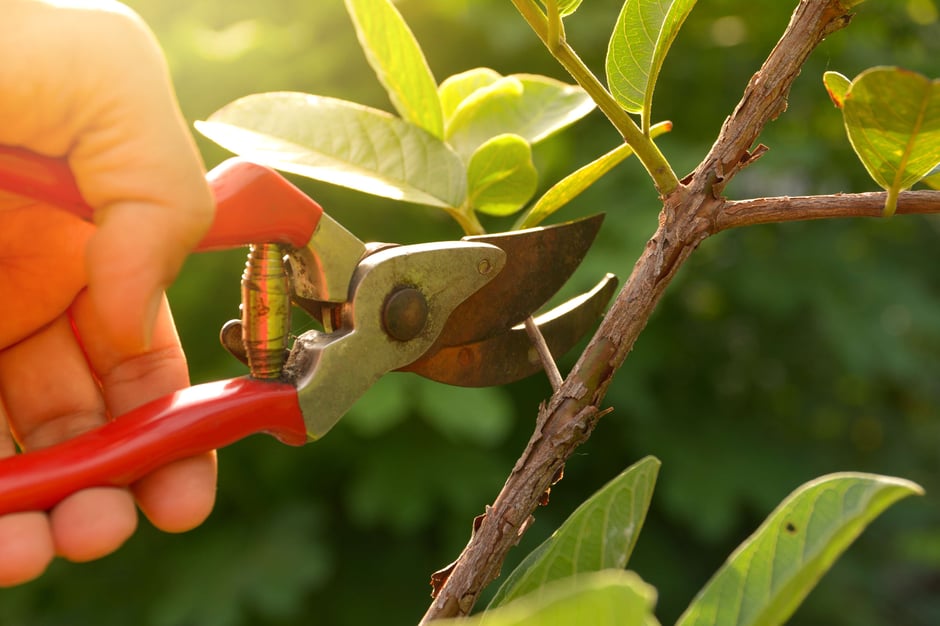Blog

Look closely at the trees on your Nevada or Arizona property. Are they growing too densely, too large, or too low to the ground? If so, it’s time to break out the clippers, loppers, and saws. Tree trimming keeps your plants looking good and adds years to their lifespan. You may be able to handle the job yourself with the proper tools and an afternoon of your time. Follow this guide to ensure you use the best tree-pruning methods.
Why Prune Trees?
Trees are generally trimmed for one or more of these reasons:
- Maintain plant health by removing dead, damaged, or diseased branches.
- Improve tree appearance by removing misshapen, crowded, or rubbing branches.
- Train plants to grow in a particular shape or size.
- Thin the crown to improve air circulation and reduce the risk of disease.
- Rejuvenate old, overgrown plants with heavy renewal pruning.
- Improve safety and visibility by trimming branches that grow too close to road signs, utility lines, or sidewalks.
The Tools You’ll Need
You only need a few key tools to prune trees correctly. Invest in high-quality products and sharpen them before each use to leave smooth cuts that heal faster. Here are the most common pruning tools:
- Hand clippers remove branches less than 0.5 inches in diameter.
- Loppers prune branches up to 1.5 inches wide.
- Pruning saws trim branches larger than 1.5 inches wide.
- Pole saws and pruners have handles up to 12 feet long to cut difficult-to-reach limbs.
- Electric, gas, or battery-powered pruners ease the task.
Tree Pruning Tips
Plan to examine your trees every year during the dormant season (late winter to early spring) to determine if trimming is needed. Avoid going several years without pruning, or your plants could become dense and overgrown. If you decide to prune this year, follow these tips:
- Find the swollen branch collar growing at the base of the branch. Always cut just outside the collar, angling down and away from the stem.
- Focus on removing branches less than 2 inches in diameter. Be careful when removing branches up to 4 inches, and reconsider trimming branches over 4 inches wide.
- Trim branches with weak, narrow, V-shaped angles. Retain limbs with strong, U-shaped angles.
- Remove broken, dead, and diseased limbs, followed by crossover branches and those that rub together.
- Never remove more than one-quarter of the living crown at once. When pruning is complete, the crown should make up two-thirds of the tree’s total height.
- Avoid painting or tarring pruned branches. This doesn’t deter insects or disease and only interferes with the plant’s wound defense system.
For help pruning the trees on your Nevada or Arizona property, turn to Moon Valley Nurseries. Our tree care team would be happy to provide pruning services, ensuring a job well done while freeing up your valuable time. We also stock a nursery full of beautiful trees to add to your yard, with convenient delivery and professional planting services available. To learn more, please contact us online or visit one of our locations in Nevada or Arizona.
Submit a Comment